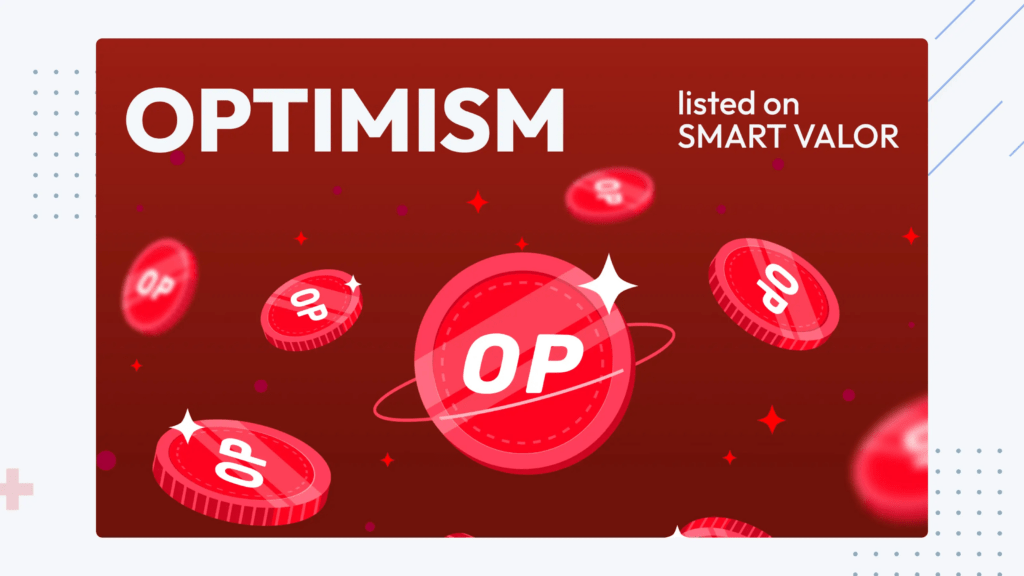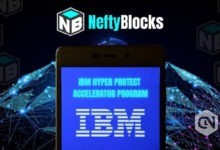Optimism Promotes Development Of A Sustainable Cryptocurrency Ecosystem

Optimism speeds up Ethereum
As cryptocurrencies have grown in popularity, the demand for block space has grown exponentially, pushing layer 1 blockchains to their limits. With the proliferation of DeFi apps, NFTs, and games, users now have many activities to choose from on-chain. This influx of network activity has resulted in congestion – higher transaction fees and slower execution times create a poor user experience and stifle economic activity. At times of peak demand, gas prices sometimes become so expensive that they can effectively price retail users out of Ethereum.
Optimism is a fast, stable, and scalable L2 blockchain built by Ethereum developers for Ethereum developers. Built as a minimal extension to existing Ethereum software, its EVM-equivalent architecture scales your Ethereum applications without surprises. If it works on Ethereum, it works on Optimism at a fraction of the cost.
This makes Optimism very attractive to developers. They can easily create their applications on the layer 2 network. And all the applications built on Ethereum also run smoothly on Optimism. So it’s no surprise that more and more people are using Optimism, and more and more dApps are being created, benefiting from the security of Ethereum. Thus, the number of transactions of Optimism has increased more than 10 times in the past year.
However, this Ethereum solution does not compete with Ethereum. Instead, Ethereum’s future in scaling involves a deployment-focused roadmap. Optimistic fusions, such as Optimism or Arbitrum, are currently the two largest Layer 2 protocols, aiming to increase Ethereum’s throughput. They reduce the computational cost on the Ethereum main chain by processing external transactions, which greatly increases the speed.
Optimistic compilations were launched in 2019, Open Mainnet launched in December 2021, and OP governance tokens were launched through airdrop in June 2022. So here is a relatively young project. Behind it is the Optimist Foundation, a nonprofit dedicated to expanding this ecosystem. Like Ethereum, Optimism aims to be completely decentralized and nonprofit. The project is funded by donations and grants and is committed to creating a developed and sustainable infrastructure.
Optimistic highlights
Vast Ecosystem
Invested by crypto giants a16z and Paradigm, understandably, Optimism has opened up for crypto projects funded by the two venture capital funds. In total, about 70 projects are running on this layer 2, which should be further encouraged to promote the development of the ecosystem.

Fragments of the ecosystem include:
- DEX
- NFT
- Wallet
- Bridge
- On-ramps
- Tool
- DAO
Designing the platform for sustainability
Optimism is designed to be as simple as possible for its feature set. It should include the minimum number of moving parts required for a secure, scalable, and flexible L2 system. This simplicity gives the design of Optimism several significant advantages over other more complex L2 constructs.
Simplicity reduces engineering costs, which means we can spend time working on new features instead of recreating existing ones. Optimists prefer to use battle-tested Ethereum code and infrastructure where possible. The clearest example of this philosophy in practice is Optimism’s choice to use Geth as client software.
When dealing with critical infrastructure, simplicity is also security. Every line of code we write is an opportunity to introduce unintentional bugs. A simpler protocol means less code to write and less surface area for potential bugs. A clean, minimal codebase is also more accessible to external contributors and auditors. All of this is intended to maximize the security and correctness of the Optimism protocol.
Simplicity is also essential to its long-term vision. By limiting the amount of code we write on the Ethereum engine, we can spend most of our time working directly with existing code bases. The technical effort that goes into Optimism can also now benefit Ethereum and vice versa. This will only become more apparent as the Optimism protocol strengthens and existing resources can be redirected to the core Ethereum infrastructure.
App developers need to ensure that the platform they are building will work and be competitive in the long run. Its design process is built around long-term sustainability and doesn’t take shortcuts to scalability. A scalable system means nothing without the ecosystem that sustains it.
Sustainability positively affects this Layer 2’s protocol design in ways that go hand in hand with the developer’s philosophy of simplicity. The more complex the code base, the harder it is for people outside the core development team to contribute actively. Keeping a developer’s codebase simple can build a larger community of contributors who can help maintain the protocol in the long run.
Hot OP token

Optimism has its token, listed under the OP ticker. The OP token uses the ERC-20 standard on the Ethereum blockchain, and OP is a governance token that allows members to have a say, such as on upgrades or inflation adjustments.
The OP token gives holders the right to participate in The Optimism Collective, a two-tier governance system that includes Token House and Citizens’ House. Citizens’ House will launch in late 2022. Token House, now live, governs technical decisions related to Optimism, such as software upgrades, and the Citizens Institute handles public goods funding decisions. In its early days, Optimism raised funds on Gitcoin, a central public goods funding platform.
The Future of Optimism
The number of projects, TVL, stable cash flow, and on-chain transactions. Optimism is now selectively adding new projects to the ecosystem and is entirely open for developers to implement their ideas. Other DeFi niches, such as lending/borrowing platforms and fundraising, must be included in the ecosystem. If it entirely unfolds, the ecosystem will thrive, but there will be more potential user risks.

Since Ethereum is limiting the growth of unicorn dapps, developers are looking at a new land to migrate their ideas and user base. Optimism is to get as many significant protocols as possible as other L2 solutions are doing the same to attract the enormous user base and liquidity available. Currently, users on this layer 2 still pay transaction fees in ETH. Therefore, the opportunity to invest in the Optimism token could be the next incentive move of the scaling solution to attract cash flow into the ecosystem.
Besides, Optimism is not the only L2 solution for Ethereum. Other companies such as Arbitrum, Metis, Boba Network,… are launching incentive programs to promote the TVL chain and attract new users into the ecosystem. As a result, we will not see the Optimism behind the L2 race, let alone stay out of the game.
DISCLAIMER: The Information on this website is provided as general market commentary and does not constitute investment advice. We encourage you to do your own research before investing.






 Bitcoin
Bitcoin  Ethereum
Ethereum  Tether
Tether  USDC
USDC  Dogecoin
Dogecoin  TRON
TRON  Cardano
Cardano  Chainlink
Chainlink  Stellar
Stellar  Bitcoin Cash
Bitcoin Cash  LEO Token
LEO Token  Hedera
Hedera  Litecoin
Litecoin  Monero
Monero  Dai
Dai  Cronos
Cronos  OKB
OKB  Ethereum Classic
Ethereum Classic  Gate
Gate  VeChain
VeChain  Cosmos Hub
Cosmos Hub  Algorand
Algorand  KuCoin
KuCoin  Stacks
Stacks  Maker
Maker  Tether Gold
Tether Gold  Zcash
Zcash  Theta Network
Theta Network  IOTA
IOTA  Tezos
Tezos  TrueUSD
TrueUSD  NEO
NEO  Polygon
Polygon  Dash
Dash  Decred
Decred  Synthetix Network
Synthetix Network  Zilliqa
Zilliqa  Qtum
Qtum  0x Protocol
0x Protocol  Basic Attention
Basic Attention  Siacoin
Siacoin  Holo
Holo  Ravencoin
Ravencoin  DigiByte
DigiByte  Status
Status  Enjin Coin
Enjin Coin  Nano
Nano  Ontology
Ontology  Hive
Hive  Waves
Waves  Lisk
Lisk  Pax Dollar
Pax Dollar  Steem
Steem  Numeraire
Numeraire  NEM
NEM  BUSD
BUSD  Huobi
Huobi  OMG Network
OMG Network  Bitcoin Gold
Bitcoin Gold  Ren
Ren  Augur
Augur  Bitcoin Diamond
Bitcoin Diamond  HUSD
HUSD